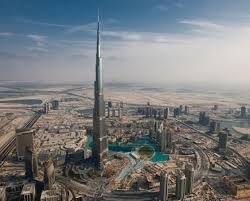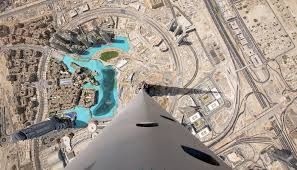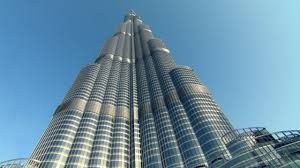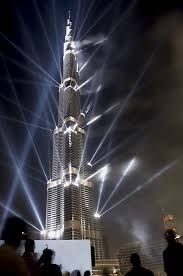Facts
- Burj Dubai is the tallest man-made structure in the world, surpassing the KVLY-TV Tower in North Dakota as well asWarszawa Radio Mast, the previous tallest structure ever built.
- The Burj Dubai had its name officially changed to Burj Khalifa during its grand opening in honor of the president of the U.A.E. H.H. Sheikh Khalifa bin Zayed al Nahyan.
- Engineers working on the design considered installing triple-decker elevators, which would have been the first in the world. In fact, the realized building uses double-decker elevators.
- The condensation water collected from the A/C system equals to 20 Olympic-sized swimming pools per year and in turn, used for landscaping.
- Over 330,000 cubic meters of concrete and 31,400 metric tonnes of steel rebar was used at the completion of the tower.
- The tower is situated on a man-made lake which is designed to wrap around the tower and to provide dramatic views of it.
- The top of the building contains a public observation deck and a private club above that.
- Burj Dubai features sky lobbies on levels 43, 76 and 123. These spaces offer fitness and spa facilities. The lobbies on levels 43 and 76 each have a swimming pool and a recreational room for receptions and other gatherings.
- This is the first world's tallest building since prehistoric times to include residential space.
- The cladding system is designed to withstand Dubai's extreme summer temperatures.
- The exterior cladding is of reflective glazing with aluminium and textured stainless steel spandrel panels with vertical tubular fins of stainless steel.
- A total of 45,000 cubic metres of concrete are used in the foundations with a weight in excess of 110,000 tonnes.
- The building sits on a concrete and steel podium with 192 piles descending to a depth of more than 50 metres (164 feet).
- The building was rotated 120 degrees to allow for less stress from the prevailing winds.
- An observation deck will occupy the 124th floor.
- The highest residential floor will be level 109.
- "Burj" is Arabic for "Tower".
- The design by Skidmore Owings & Merrill replaces a plan to reuse the design for Grollo Tower, which was proposed in Melbourne a few years earlier.
- Burj Dubai became the world's tallest high-rise building on July 24, 2007, and the world's tallest self-supporting structure on September 12, 2007.
- Designed by Adrian D. Smith, FAIA, RIBA Design Partner at Skidmore Owings & Merrill LLP.
- Although the building's shape resembles the bundled tube concept of the Willis Tower, it is structurally very different and is technically not a tube structure.
- A subtle reference to the onion domes of Islamic architecture can be found in the building's silhouette when looking up at the lobes from near the base.
- The triple-lobed footprint of the building is based on an abstracted desert flower native to the region.
- The maximum elevator speed is 600 m/min.







